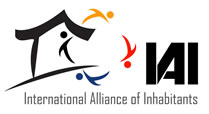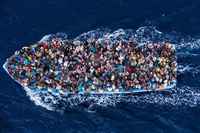What you need to know about the global refugee crisis
We are witnessing the largest and most rapid escalation ever in the number of people being forced from their homes. In 2014, an average of 42,500 people were displaced every day.
Millions of people are fleeing conflict in Syria, Iraq, Afghanistan and Ukraine, as well as persecution in areas of Southeast Asia and Sub-Saharan Africa, creating the highest level of displacement since World War II.
The world desperately needs to come up with better responses to this global crisis. Here are some of the population movements that IRIN has covered in the last year alone:
According to the new UNHCR Global Trends Report , at the end of 2014 almost 60 million people had been forcibly displaced from their homes.
Who is fleeing?
- Syria is now the world's largest producer of refugees (3.88 million), having overtaken Afghanistan (2.59 million), while Somalia comes in third (1.1 million).
- In Sub-Saharan Africa, overall displacement was up 17 percent in 2014, driven by civil war in South Sudan and conflicts in Somalia, Mali and the Central African Republic.
- In Southeast Asia, persecution of the Rohingya, an effectively stateless Muslim ethnic group from Myanmar, has led to a refugee and people-trafficking crisis , with mass graves uncovered in jungle camps in Thailand and Malaysia and thousands left stranded on boats at sea.
- After Syrians, Eritreans make up the second largest national group of asylum-seekers risking their lives to cross the Mediterranean. Almost 11,000 have arrived in Italy so far this year, and in 2014 nearly 37,000 applied for asylum in the European Union.
Who is hosting them?
- Turkey is now the world's top refugee hosting country, mainly due to the conflict in neighbouring Syria. It is followed by Lebanon, Iran and Pakistan.
- In 2014, a record high of nearly 1.7 million individuals submitted applications for asylum or refugee status. With 274,700 asylum claims, the Russian Federation was the world’s largest recipient of new individual applications, mainly as a result of the conflict in Ukraine.
- Greece is fast catching up with Italy as the main entry point into Europe for migrants and asylum-seekers. An average of 600 a day are now coming ashore in the eastern Aegean and a total of 42,000 have arrived so far in 2015, a six-fold increase on last year.
- In the EU, the biggest volumes of asylum applications in 2014 were received in Germany and Sweden. Several European countries (and the United States) have been criticised for failing to take more Syrian refugees through resettlement programmes.
The Journey
Libya's civil war has opened up the country as a gateway to Europe. Many African migrants endure long, perilous journeys through the Sahara desert, often experiencing kidnapping and violence at the hands of smugglers. The ones who eventually reach Libya risk arrest and long periods of incarceration in one of the country’s 20 official detention centres – all of which are overcrowded and underfunded.
Read more on Libya's detention centres
Fortress Europe
European countries are divided over how to respond to the increased numbers of migrants and asylum-seekers trying to enter the EU. Hungary will soon start to fence off its border with Serbia, while Bulgaria has adopted a harsh approach to the sharp rise in the number of irregular entries from Turkey. Spain recently passed a law legalising the immediate return to Morocco of migrants and would-be asylum seekers who penetrate the fenced-off North African enclaves of Melilla and Ceuta.
Intensified border controls, push-backs and reports of abuse have not deterred migrants and asylum-seekers from continuing to try to reach Europe. When one border closes, migrants and their smugglers find other routes .
Hundreds of refugees and migrants aboard a fishing boat are pictured moments before being rescued by the Italian Navy as part of their Mare Nostrum operation in June 2014. There has been a dramatic growth in the number of refugees seeking safety by undertaking dangerous sea journeys, including on the Mediterranean (Massimo Sestini/The Italian Coastguard)
Deaths at sea in the Mediterranean grabbed the headlines earlier in the year, but only represent one aspect of the increasingly dangerous journey that migrants and asylum-seekers are undertaking to reach Europe.
Internal Displacement
The number of people displaced within the borders of their own countries also soared in 2014

